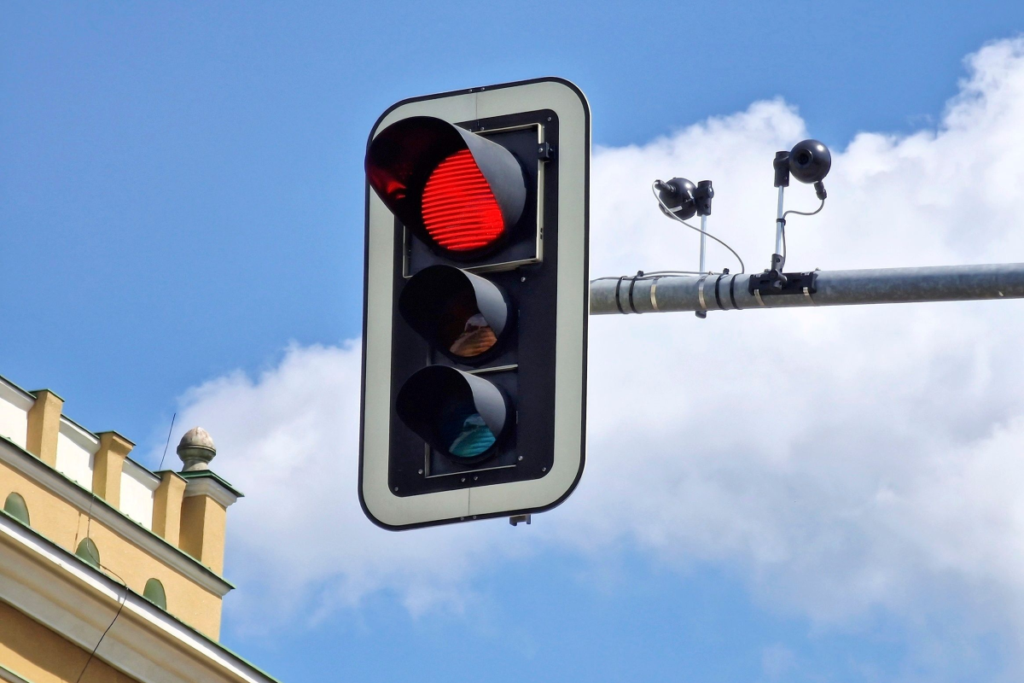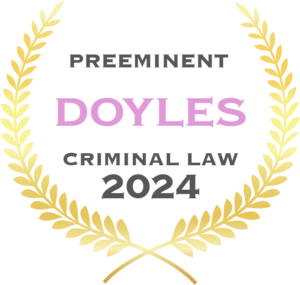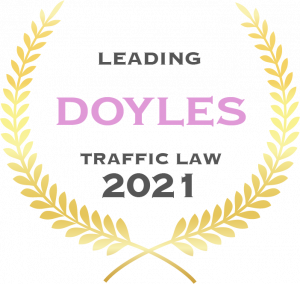With red light speed cameras becoming increasingly prominent on NSW roads, it is important for all road users to understand how they function and the possible consequences of running a red light.
What is a red light camera offence?
As outlined under Division 56 of the Road Rules Act 2014, it is a criminal offence not to stop at a red light signal. The legislation states:
(1) A driver approaching or at traffic lights showing a red traffic light must stop—
(a) if there is a stop line at or near the traffic lights—as near as practicable to, but before reaching, the stop line, or
(b) if there is a stop here on a red signal sign at or near the traffic lights, but no stop line—as near as practicable to, but before reaching the sign, or
(c) if there is no stop line or stop here on a red signal sign at or near the traffic lights—as near as practicable to, but before reaching, the nearest or only traffic lights,
and must not proceed past the stop line, stop here on red signal sign or nearest or only traffic lights (as the case may be) until the traffic lights show a green or flashing yellow traffic light or no traffic light.
Red light cameras have been implemented Australia-wide to enforce these road rules in order to best protect individuals on our roads. If you have been caught running a red light by a red light camera, you may be liable to a fine as well as a loss of demerit points.
How do red light cameras work?
Red light speed cameras work through motion sensor technologies, which trigger the camera when both sets of a vehicle’s wheels cross the white stop line after the lights have turned red.
Through use of either the vehicles tracking radar or electronic detectors embedded in the road, they are then able to detect and record the speed of a vehicle.
The camera is positioned to take images of the rear of the vehicle after it enters the intersection following the lights turning red. This function is triggered when both sets of a vehicle’s wheels cross the white stop line after the lights have turned red.
How accurate are red light cameras?
Road and Maritime Services NSW assesses and tests each red light camera for accuracy and reliability every 30 days, and each camera’s speed-measuring device every 12 months. A camera-recording device must be calibrated every 90 days under Section 138 of the Road Transport Act and Clause 35 of Road Transport (General) Regulation 2013. An inspection is also carried out after any maintenance or repair of a full camera system or its speed-measuring device.
What happens if I’m caught by a red light camera?
If a vehicle travels over the stop line at an intersection where there is a red light camera installed, the device will automatically photograph the vehicle, recording the number plate, date and time of offence, location, and the speed at which the car was travelling.
A copy of the digital image can also be downloaded from the Revenue NSW website. Individuals will then receive a penalty notice from Roads and Maritime Services (RMS) at the address of the person the car is registered to. You will also receive a payment confirmation or reminder by email or mobile fine if Revenue NSW holds these details. The fine and its payment is then dealt with by Revenue NSW.
What happens if I wasn’t driving the vehicle?
If you receive a penalty notice for running a red light but you were not driving the vehicle at the time of the offence you can fill out the provided statutory declaration form and submit it to Revenue NSW for processing. It is important not to provide a false statutory declaration, however, as you may become liable for penalties far greater than those imposed for a red light offence.
Penalties
Under regulation 56 of the Road Rules 2014, if an individual is caught running a red light they are liable to a fine of $481 and the loss of 3 demerit points. If the incident takes place during school hours, and the camera is installed in a school zone, the driver will be fined $603 and lose four demerit points. Additionally, double demerits apply if it occurred during a long weekend or holiday period.
What counts as running a red light?
Red light cameras are programmed to photograph the rear of any vehicle travelling over the white stop sign 0.3 seconds after the lights have turned red. The cameras are not triggered by vehicles crossing the line when the traffic lights are amber.
Appealing a red light camera offence
Generally, if a red light camera has caught you, you will receive both a fine and a traffic infringement notice by mail. In some situations, individuals may be caught on camera even if they did not actually run the light, or there was another reason they were over the line. In these circumstances, you can appeal the charge in court.
Should you wish to appeal a red light camera offence, it is important that you contact experienced traffic lawyers, such as the team at Hamilton Janke Lawyers, to assist you in your matter and help you achieve the best possible outcome.
Red light camera fine leniency
Alternatively, you can enter an appeal with the court for leniency if you accept you did run the red light and ask the magistrate to deal with the matter differently. This may avoid accumulating demerit points, which could result in a loss of licence and paying a hefty fine. The magistrate may instead choose to sentence you with a ‘section 10 dismissal’ or a ‘conditional release order’ instead of the initial punishment.
Key Takeaways
- Running a red light in NSW incurs a $481 fine and 3 demerit points loss; in school zones, it's $603 and 4 points.
- Red light cameras activate 0.3 seconds after the light turns red, capturing vehicles crossing the stop line.
- Accuracy checks are performed regularly on red light cameras for reliability.
- Appeals for red light camera offenses are possible, with legal advice recommended for the best outcome.
- Leniency may be sought in court, potentially avoiding demerit points and fines through alternative sentencing like a 'section 10 dismissal'.
In Need of an Experienced Traffic Lawyer?
If you have been sent a traffic infringement notice for a red light offence and are unaware of your rights or wish to enter an appeal, contact the expert team of criminal lawyers at Hamilton Janke Lawyers. We can provide invaluable advice and assistance to ensure you receive the most favourable outcome.
Written By

James Janke
James Janke is founding partner at Hamilton Janke Lawyers, and has more then decade of experience as a Criminal Defence Lawyer. Admitted to both the Supreme Court of New South Wales and High Court of Australia




